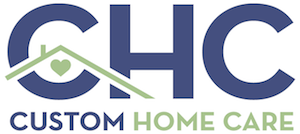It seems that everywhere people look, the consequences of excessive sodium consumption are plain. Eating too much salt can aggravate high blood pressure and even cause a heart attack or stroke over time. But a lack of sodium can also be a serious problem. Hyponatremia is more common in seniors, creating issues with mobility and cognitive function. Wondering how to increase sodium levels in the elderly naturally? This guide provides valuable information and tips for adding sodium to a healthy diet.

Introduction to Sodium and Elderly Health
Salt is a vital component of many foods, for flavor, stabilization and preservation. It is also a vital electrolyte that people need to function. As an electrolyte, sodium provides the key to managing nerve impulses, which is key to retaining cognitive function as people get older. Sodium also helps the body control the muscles, which older adults need for safe movement and maintaining their strength. The American Heart Association recommends that most seniors get about 1,500 milligrams of sodium per day, but this recommendation depends on a person’s needs, physical activity and ongoing health conditions.
Although many people read about the negative effects of excessive sodium intake, there are also concerns about consuming too little. Low sodium levels in the body can lead to a dangerous condition called hyponatremia, where the body fluid has too much water in relation to blood sodium. This condition causes a variety of symptoms, including:
- Headache
- Confusion
- Muscle weakness
- Drowsiness or fatigue
- Nausea or vomiting
- Irritability
Seniors are more likely to develop hyponatremia due to medications they take, such as diuretics, or chronic conditions like kidney disease. Even drinking too much water can cause this problem. Left untreated, severe hyponatremia can result in death.
Natural Ways to Increase Sodium Levels
Increasing sodium levels may not require bags of IV saline or salt tablets, especially for older adults who have minor issues with low sodium levels. Many foods naturally contain sodium, and eating these foods can help to boost sodium levels into normal ranges. Natural sources of sodium include:
- Dairy products, especially cheese
- Root vegetables like celery or beets
- Red meat, poultry and seafood
- Nuts and legumes
Herbs and spices can be an effective tool to augment a low blood sodium level. On top of adding necessary flavor and complexity to a meal, many of these seasonings contain notable levels of sodium. Dill, celery seed, coriander, parsley and cumin have significant levels of sodium.
Although salt tablets can be an effective way to dramatically change low blood sodium, people should consume them with care. Salt tablets contain varying levels of sodium, from 400 mg to 1,000 mg or more. It is important to get recommendations from the doctor about the best brands to use with instruction on how to use them effectively. Usually, seniors should take the supplement with a specific amount of water as directed by a doctor. Taking sodium supplements without water or other electrolytes can make dehydration worse.
Hydration and Sodium Balance in Seniors
Since blood sodium is such an important aspect of several body functions, keeping the body in the right balance is key. The kidneys hold onto a certain amount of water in the body to balance out the sodium level. When people drink too much water, take medications that increase urine production or have other conditions that affect hydration, the body dilutes too much of the sodium to maintain certain functions. This condition can cause symptoms of dehydration particularly in older adults, even for those who seem to drink plenty of water.
High sodium intake can lead to high blood pressure, increasing the risk of heart attack or stroke. As such, attempts to raise low sodium levels should be made with caution. Rather than simply increasing salt intake, older adults dealing with hyponatremia should also consider limiting their consumption of water and other fluids.
Electrolyte imbalance can create serious problems, whether a person has too much or too little. This highlights the importance of paying attention to sodium intake and hydration. Although people may associate muscle weakness, fatigue or irritability as a sign of getting older, these can be symptoms of a serious condition that requires prompt care.
Monitoring Sodium Levels in Elderly Care
In most cases, seniors can assess low blood sodium from a blood or urine test. For a blood test, patients provide a small sample of blood from a vein. They may need to discontinue taking medications or fast for some hours before the test depending on their regular medications and the doctor’s recommendation. Sodium content in the body can also be tested through a urine sample. A urine sample requires a clean catch and analysis. This type of test can be collected and even processed at home, which may be desirable for people with limited mobility or patients who need to test very frequently. Although most experts recommend that people test their sodium once a year, many seniors may require additional testing.
Some treatments that older adults need for low sodium level are dietary, but healthcare professionals play an important role. Besides being able to expertly diagnose dehydration and regularly assess low blood sodium through testing, doctors can help their patients to figure out how to quickly treat an electrolyte imbalance. They can offer valuable advice in balancing sodium chloride intake with fluid consumption in ways that will work for the patient.
Role of Sodium in Muscle Function and Exercise Performance
Sodium is a key mineral and electrolyte needed for proper muscle function, which is an important part of maintaining mobility as people age. The sodium paves the way for effective nerve impulses, which stimulate the muscles to release calcium ions as part of a contraction. Once the calcium is reabsorbed, the muscle relaxes. Since responsive nerve impulses and muscle contractions are such vital aspects of movement, a lack of sodium to hinder the process can create serious problems.
Hyponatremia or inefficient salt intake can affect muscle function in seniors, lowering their ability to build muscle mass, exercise effectively or maintain mobility. Research findings published in the journal BMC Geriatrics reported that even mild hyponatremia is associated with a decrease in grip strength, walking speed, skeletal mass and difficulty standing on one leg. These are key aspects of mobility, especially for seniors who struggle with activity due to injuries or conditions like rheumatoid arthritis. Sodium deficiency can make it harder for older adults to exercise effectively, which can trigger further decline of mobility and strength. Fortunately, it may be simple to resolve mild hyponatremia with added salt to the diet. Greater care for diet in the early years of retirement can yield significant improvements to physical function over time.
Sodium and Cognitive Function in Older Adults
While many people think that cognitive decline is a common part of the aging process, serious decreases in cognitive function often indicate a medical concern. Research from the Clinical Journal of American Social Nephrology concluded that mild hyponatremia is likely to cause cognitive impairment. Participants in the study had their blood sodium tested, and then they were asked to perform a number of routine cognitive tests. Seniors with hyponatremia were significantly more likely to show cognitive impairment.
The BMC Geriatrics study noted that hyponatremia may also contribute to mood disruption or depressive mood disorders. When patients in the study were given tolvaptan, a medication designed to treat hyponatremia or kidney disease, those given the drug had notable improvements to their cognitive function along with their sodium levels. This research indicates that a balance of sodium in the diet may lead to positive effects to a person’s mood and cognitive abilities as they age.
Managing Sodium Intake: Tips for Caregivers
Balancing the need for proper hydration and sodium levels can be a struggle for caregivers. Many people start to limit the range and volume of their diets as they get older, eating and even drinking less. For people who take medications or struggle with conditions that affect kidney function, care for water consumption can make a positive change. Seniors or caregivers may want to portion out the correct amount of water for the day, so that they can track that consumption over time.
Meal planning can help older adults and care providers to control sodium intake. Many processed foods contain large quantities of salt, highlighting the benefit of cooking fresh, delicious foods from scratch. For people who are accustomed to seasoning their food with salt before eating, presetting an amount that they should use each day can maintain ideal sodium intake and minimize accidental overconsumption.
Trust Custom Home Care for Effective Dietary Management
Learning how to increase sodium levels in the elderly at home naturally requires an understanding of the important balance of sodium in an older adult’s diet. Too little sodium can make it difficult for people to move or think effectively, and sometimes even be fatal. Too much can put them at risk for long-term health conditions, which is why a balanced diet is so important. Contact us to learn more about our home care services and how we can help your parents or relatives adhere to an already approved diet.
